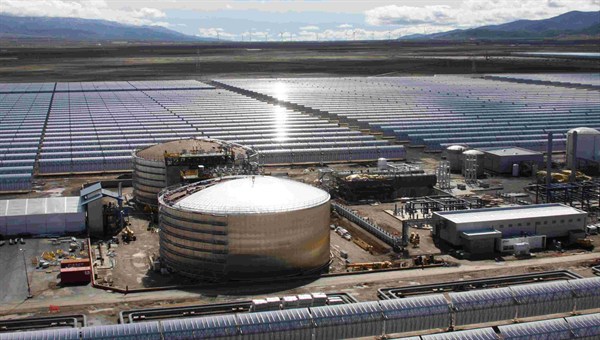The German Aerospace Center (Deutsches Zentrum für Luft- und Raumfahrt; DLR) has released a free version of the simulation program FreeGreenius. The program brings together technical and commercial aspects and is able to calculate the yield that a renewable power plant project will bring at a certain location. In addition, it determines how a system must be designed and constructed to ensure it can feed the targeted quantity of power into the grid. Thus, system planners and investors are provided with a preliminary overview of whether, and under which conditions, a solar thermal power plant, a wind turbine or a photovoltaic power plant would be best suited to the site in question.
Reliable information on solar radiation and wind strength
The first things to consider when planning the construction of a solar power plant or a wind farm are solar radiation and wind strength. “Unlike conventional power stations, for which resources such as gas and coal are always available, the planners of this kind of system require reliable information on how much power a wind turbine will produce over the course of a year,” says Jürgen Dersch, FreeGreenius Project Manager at the DLR Institute of Solar Research. To do this, the program is fed with hourly values of global radiation, direct sunlight or wind speed over the course of a typical year. The program considers the economic framework in order to estimate a system’s efficiency – what price is paid per kilowatt-hour fed into the grid? Funding programmes for the construction of renewable systems in certain regions and the interest rates for loans and equity also play an important role.
Ideal power plant size and technology
“The program is a specialist system for development planners and consultants. But it also allows investors to review the commercial outlook of power plants,” says Dersch, describing the program’s target users. It is a specialist tool because users are required to feed the simulation program with information on the system design and numerical values for some parameters. The program determines the ideal power plant size and technology for the individual units, depending on how much power the station is asked to produce over the course of the day. System planners can also analyse whether a power station exclusively using wind turbines or solar power is a sensible choice, or whether a hybrid plant would be a better option. Simulation of power plant operation over the course of a year delivers hourly readings.
DLR developed FreeGreenius in an ongoing exchange with system constructors; it is continuously being adapted to keep up with technical progress.
Deployment in training programmes
FreeGreenius is also used in training programmes for engineers, among others, as part of the DLR enerMENA curriculum. This involves inviting engineers from the Middle East and North Africa to receive training in the planning, construction and operation of solar power plants. FreeGreenius is intended to promote the introduction of wind turbines and solar power plants to the market. The software helps power plant planners and developers to use the right technology and avoid planning errors. FreeGreenius receives funding from the German Federal Ministry for the Environment, Nature Conservation, Building and Nuclear Safety (Bundesministerium für Umwelt, Naturschutz, Bau und Reaktorsicherheit; BMU).
http://www.helioscsp.com/noticia.php?id_not=2302
Concentrated Solar Power, Concentrating Solar Power, CSP, Concentrated Solar Thermal Power, solar power, solar energy, German Aerospace Center,


